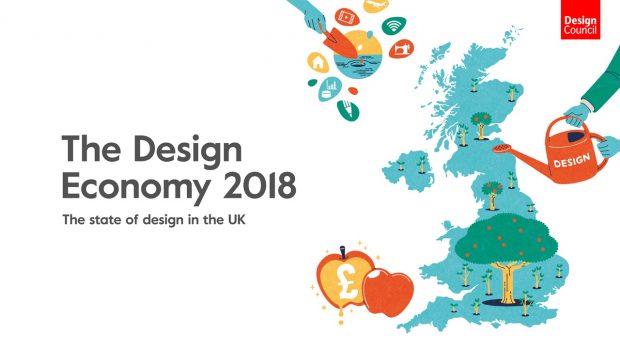Guest post by Sally Benton, Director of Policy and Communications at Design Council.

Britain is a world leader in design. It is one of this country’s greatest strengths. Design is responsible for shaping the built environment, the digital world and the products and services we use and it is a centre of industrial change.
It’s design that creates better places, better products, better processes and better performance. Design Council’s new report, Design Economy 2018, sets out the importance of design in delivering a successful Industrial Strategy and how it will be a fundamental part of the future economy.
The Design Economy 2018 report builds from Design Council’s 2015 research, which was the first time that the value of design had been comprehensively measured, and looks at how businesses are using design and how well design is accessed across the country.
The research tells a compelling story of escalating growth, the rapid rise of digital design and deep-rooted connection to UK innovation.
Sector's 51% growth in 6 years
In 2016 the design economy generated £85.2 billion in gross value added (GVA) for the UK. This is 73% of the value of the financial and insurance industry, highlighting its importance to the economy. Even more compelling is the speed of this growth compared to other sectors. Between 2010 and 2016 the design economy grew by 51%.
The number of people involved in the design economy is also growing: 1.69 million people now work in the design economy – an increase of 29% since 2010.
This is about the same number that work in the hospitality sector, but it’s the pace of this growth that tells the story of design and its deep connection to the fourth industrial revolution. This is almost three times the rate of growth in employment for the UK economy as a whole over the same period.
What has been key to design’s recent growth is digital design. This subsector is the fastest growing part of the design economy and firms in this sector experienced an 85% growth in turnover between 2009 and 2016.
Digital design is also the UK’s most valuable design exporter. Overall, we are still a global player in design exports, we are now sixth in the world behind France, Switzerland, USA, Hong Kong and Germany. However, this has slipped one place since our 2015 report and provides an amber warning as countries such as China, Saudi Arabia and South Korea accelerate their investment in design.
It's not just design firms reaping the benefits from the growing importance of design. Designers operate in non-design businesses in large numbers and UK businesses are increasingly using design to innovate and drive improvement in productivity.
Investing in design
UK tech, telecommunications, banking, aerospace and advanced manufacturing are investing significantly in design and design skills to improve their products and processes to drive the innovation and customer experience expected in the digital age.
The research makes clear the link between design and productivity, with designers 29% more productive than the average UK worker, each delivering £50,328 in output (GVA per worker, 2016), compared to £39,111 across the rest of the economy.
It is no surprise that design is central to the five foundations of productivity in the Industrial Strategy. Crucially we have found that when business invest in design they invest in R&D and they innovate, leading to long term productivity changes.
And we need design to make the world’s most innovative economy, to create good jobs, to upgrade infrastructure, to create a good environment and to build prosperous communities across the UK.
Design will help meet the Grand Challenges
We are excited by the impact design can have make for the Grand Challenges. Whether it is AI and Data, the Future of Mobility, Clean Growth, or the Ageing Society, design has a vital role to play.
For it to have real impact, design cannot simply be viewed as the aesthetic finish to a product, service or policy. It isn’t there merely to make a challenge look beautiful, design exists to solve problems and it is fundamental to how the challenges will achieve the industrial strategy aims.
Some of this work has taken place already with a design approach used in parts of the Ageing Grand Challenge but more could be done to take advantage of design in the UK.
There are also challenges for design. If design is to continue to be a success, we have to address the trends emerging in the report.
Industry's challenges are in diversity and regional imbalance
Design has a diversity challenge, with women particularly being left behind. This is a stubborn trend, failing to shift since 2015 and men make up 78% of the design economy.
It is also regionally imbalanced with London and the south-east and larger more successful businesses continuing to benefit most from the design economy. This uneven distribution of design risks a growing divide between those businesses, places and people that have access to design and those that do not.
Design is a UK success story. It provides a core plank for future growth. However, the potential of design remains untapped in too many places and businesses.
If we place design at the core of the Industrial Strategy and the Grand Challenges we have a real opportunity to create an economy ready for the future. Design Council is determined to help us do that.
